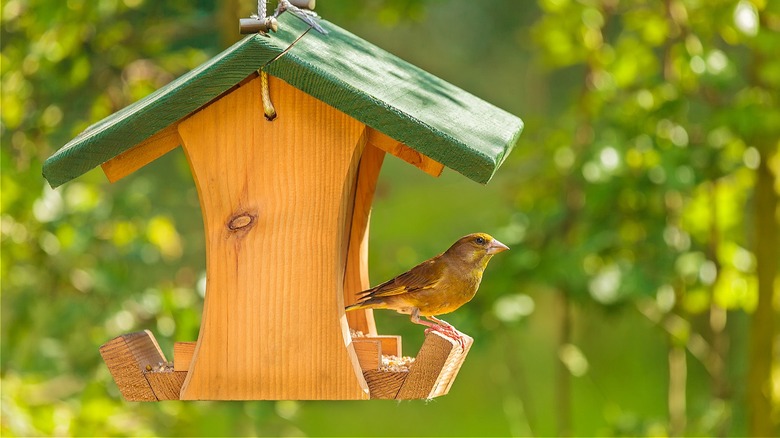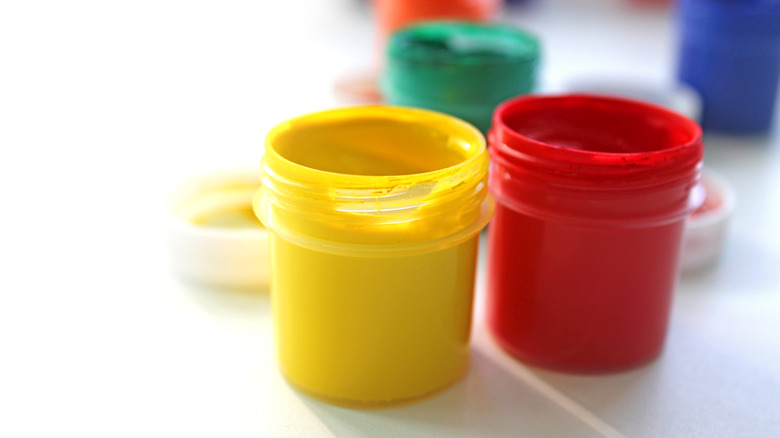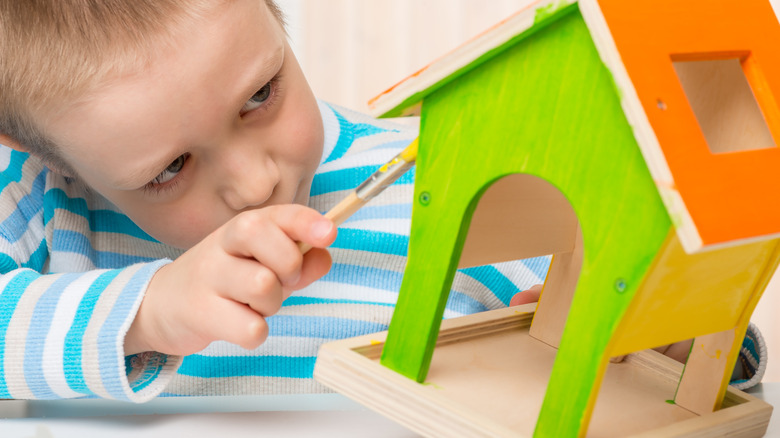Is It Safe To Paint A Bird Feeder?
Whether you're trying to personalize a new bird feeder or adding a splash of color to an old one to attract finches to your garden, a little paint can go a long way. However, before you start slathering your bird feeder with a fresh hue, it's important to think ahead. Imagine the horror that would unfold if your decorating efforts resulted in harming the very birds you were trying to please. While it's safe to paint a bird feeder, the colorant must be nontoxic and measures must be taken to prevent it from seeping into food.
Caution is key when it comes to painting a bird feeder. Consequently, it's important to consider the type of bird feeder you want to wash with color as some are more conducive to painting than others. For example, a tube feeder, featuring a tall transparent plastic cylinder, would not be an ideal style to paint. Doing so would cover the clear tubing and prevent you from seeing when food needed to be replenished.
A better type of bird feeder to paint would be a hopper design. Shaped like a house — complete with a pitched roof and windows — the hopper is a classic bird feeder that has plenty of exterior space to safely embellish with your desired paint color. What's more, a large portion of hopper feeders are made from wood, which is an ideal medium to treat as it's adaptable enough to accept a variety of nontoxic paints.
Safest types of paints to color a bird feeder
You don't want to poison birds that glide into your yard for a snack at your bird feeder; therefore, it's critical to use only non-hazardous paints made from natural ingredients, such as water, chalk, plants, and milk protein. These types of organic-based paints emit little to no smell, which makes them ideal for bird feeders. When shopping, look for environmentally friendly paints that don't feature lead, zinc, or chromate on the ingredients list.
In addition, stay away from interior paints. Instead, select varieties formulated exclusively for exterior use. Basically, you want to pick the same type of paint you would use to color patio furniture, backyard sheds, or fences. Outdoor paint contains properties that tolerate excessive exposure to sun and water. Meaning your painted bird feeder will be able to withstand rain, snow, heat, and humidity without endangering hungry winged visitors looking to chow down in your yard.
While bird feeders can be painted in a multitude of colors, some homeowners reach for the brush when they want to tone down feeding stations. If you prefer a more discreet-looking bird feeder that complements your garden design, consider applying a water-based stain or wood sealer. Linseed oil or water-soluble stains are great options to refresh faded wooden bird feeders. Just remember to gently sand the bird feeder prior to applying the natural treatment to get rid of any splinters or residue that may have accumulated over time.
How to safely paint bird feeders
Regardless of whether you choose a bold paint color or a more subdued stain, it is vital that you actively avoid using the products on the interior of bird feeders., as avians often peck at the insides of feeders. When this happens, there's the potential for birds to suffer eye irritation if residual paint specks come in contact with their orbs. Additionally, despite using eco-friendly paint, you don't want visiting birds to ingest fragments that may chip off feeders as part of normal wear and tear.
To ensure the safety of noshing flocks, use a brush to coat the exterior of bird feeders rather than dunking the entire contraption in a large container of paint all at once. While the dunking method may appear to save time, it's nearly impossible to protect the interior of the feeder from paint exposure. Likewise, using spray paint on bird feeders isn't recommended as it doesn't offer the precision needed to keep paint from bleeding into areas that contain bird food. Rather, apply a primer, then brush on your preferred color to exterior areas only. Finally, it's critical that you allow the paint to completely dry before you place food in the device and allow birds to belly up to your all-you-can-eat outdoor diner.


